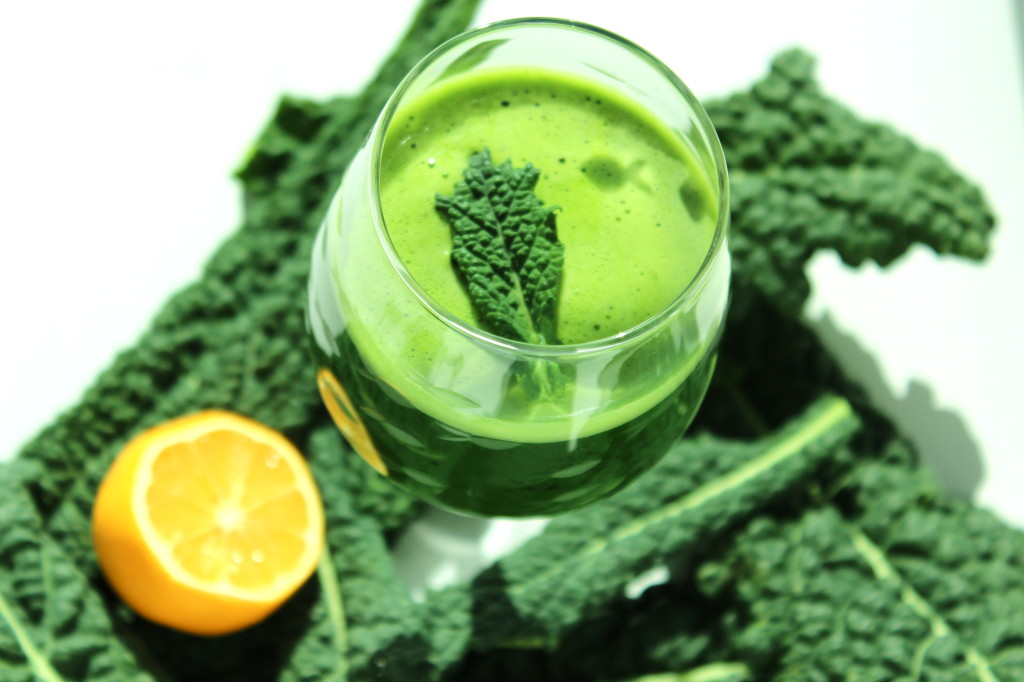There are numerous health benefits of Kale. It is a very powerful leafy green vegetable that can be used to support your reversal of rheumatoid arthritis symptoms. However, to get the best from kale, you should buy organic as inorganic often has higher levels of pesticide.
You can steam, eat raw, or juice kale. It is great in salads, juices, steamed and added to soups.
Kale has been nicknamed ‘The New Beef’.
Health Benefits of Kale
Here are some of the top health benefits of kale.
Kale is High in Calcium
Kale is very high in calcium [1]. It is higher in calcium than other foods like milk. Calcium is important for healthy bones and teeth. It can also help prevent osteoporosis and promotes a healthy bone mineral density.
Kale is High in Iron
On a per calorie basis, Kale is higher in iron than beef. Iron deficiency (anaemia) is one common nutrient deficiency across the world. With Kale there are benefits such as increased haemoglobin production, better oxidisation, aiding in muscle and brain function and it can prevent chronic disease.
Kale is Packed with Fiber
Fiber helps with your digestion and it can help with elimination processes in the body. Fiber also aids in lowering the risk of heart disease and diabetes.
Kale is a Great Source of Vitamin C
Vitamin C boosts the immune system and aids in preventing cardiovascular problems, stroke, depression, and prenatal health issues. We have an entire article on the benefits of Vitamin C and Rheumatoid Arthritis
Kale is filled with Vitamin A
Look no further! Fulfill your daily requirement of Vitamin A with one serving of kale. This daily boost aids vision, skin, and creates a healthy immune system.
Kale is high in antioxidants.
Kale is a great source of beta-carotene, which is believed to be a big fighter against cancer, heart disease, and chronic illness. A great way to get these benefits is with juiced green goodness.
Tips for Enjoying the Health Benefits of Kale
Top Tip 1
When eating kale in a salad, shred the leaf away from the stem and discard the stem. Set the shredded kale leaves in a bowl and sprinkle lightly with sea salt and lemon juice to allow the leaves to break down and open the flavor.
You can even give the leaves a bit of a squeeze with your hands to help them break down.
Top Tip 2
When steaming kale, simply steam for approximately 5 minutes and enjoy with other veggies, lemon juice, sea salt, or other favorite herbs.
Top Tip 3
When juicing kale, use about 3-4 leaves and shred the leaves away from the stem (which can give a bitter taste).
Suzanne shared her story of how she freezes her bag of kale and then removes it after two days and powders it. This is perfect for adding scoops to smoothies, and was one of her strategies that helped Suzanne reverse Rheumatoid Arthritis symptoms.
Top Tip 4
Try to buy Organic. There are a lot of pesticides that are sprayed on this popular plant and these can be harmful. Research has also shown there are lots of health benefits for organic food [2].
Top Tip 5
Want to grow it? Forget the grocery store and grow your own kale in a pot. If you have a backyard, front porch, or small balcony you can grow some healthy organic kale plants right in the comfort of your home. Kale likes cooler weather but can grow up to 80 F (just ensure to keep it in the shade).
Need some Inspiration?
Check out this kale recipe for a tasty salad to try with any dish. Or try kale in your green smoothie.
[1] Heaney RP, Weaver CM. Calcium absorption from kale. Am J Clin Nutr. 1990 Apr;51(4):656-7. doi: 10.1093/ajcn/51.4.656. PMID: 2321572.
[2] Glibowski P. Organic food and health. Rocz Panstw Zakl Hig. 2020;71(2):131-136. doi: 10.32394/rpzh.2020.0110. PMID: 32519524.


